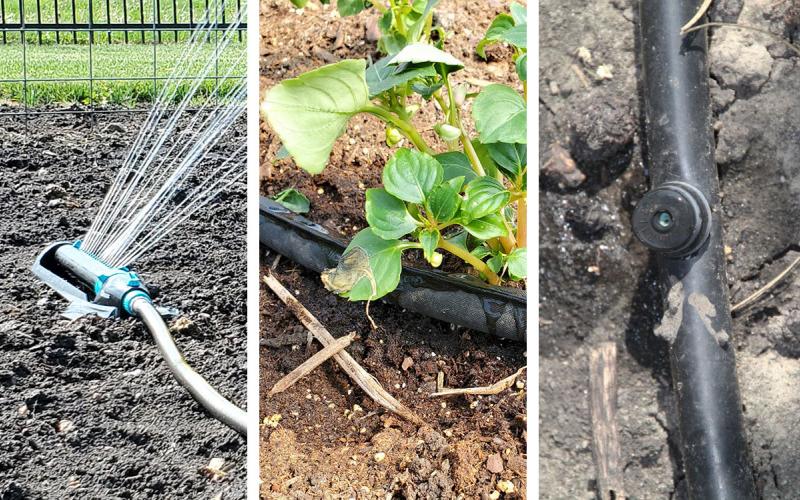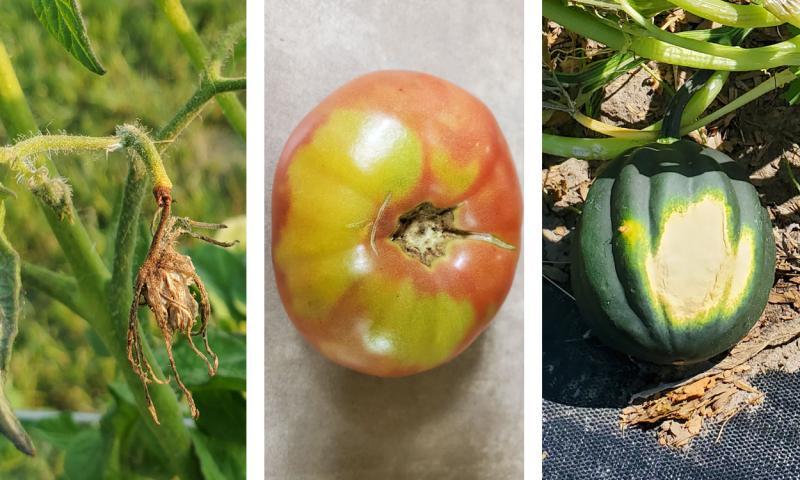
Written by Rhoda Burrows, former Professor & SDSU Extension Horticulture Specialist.
When temperatures warm into the upper 90s in degrees Fahrenheit, gardeners start to notice that their vegetables may not be producing as well as they would like. It is not unusual for tomatoes to stop setting fruit and seem to be slow to ripen. They may also notice that there are very few new cucumbers or green beans. So what is happening?
Most fruiting vegetables, such as melons, tomatoes and peppers, grow best at temperatures in the upper 70s to mid 80s in degrees Fahrenheit. Flower production and fertilization are particularly sensitive, especially to warmer nighttime temperatures.
Let's take a look at some of the most-common heat problems that might appear in your garden during these conditions.
Common Heat Problems
Aborted Flowers

If daytime temperatures are above 90 degrees Fahrenheit and nighttime temperatures stay above 70 degrees Fahrenheit, tomato flower buds will tend to fall off rather than set fruit. In tomatoes and peppers, daytime temperatures over 90 degrees Fahrenheit also tend to result in abnormal pollen, so that the flower is not fertilized, and fruit does not form. Cooler nighttime temperatures can help alleviate some of the daytime heat damage, particularly for fruit set and formation. Fruit set sprays are available, but these are hormones that will allow the fruit to form without fertilization and seed formation, and they may result in puffy, hollow or otherwise malformed fruit, which may also be lower in acidity.
Yellow Shoulders
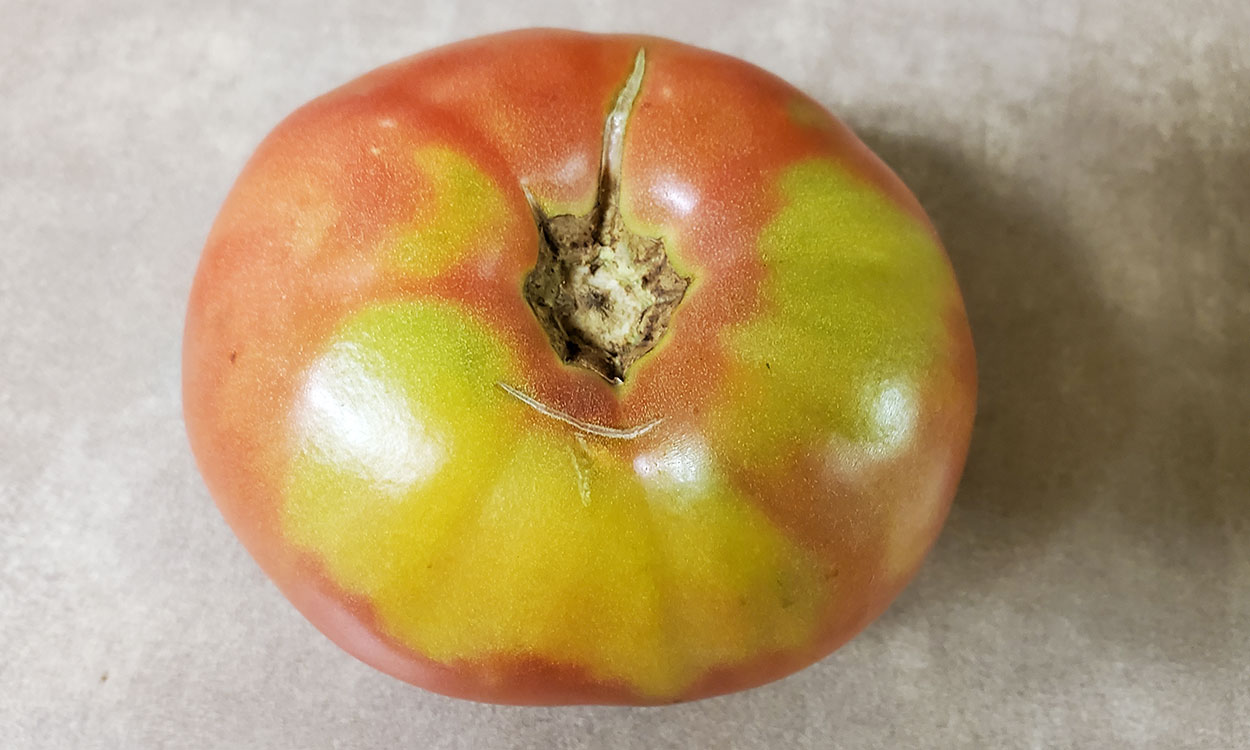
High temperatures on tomatoes can inhibit formation of red and yellowing coloring of tomatoes.
Lycopene, which is responsible for the red coloration, ceases to form at temperatures over 85 degrees Fahrenheit.
Carotene, which is the yellow pigment, is a bit more heat-tolerant, which is why some varieties will tend to form yellow “shoulders” on the most sun-exposed side of the fruit.
Sunburn and Sun Scald
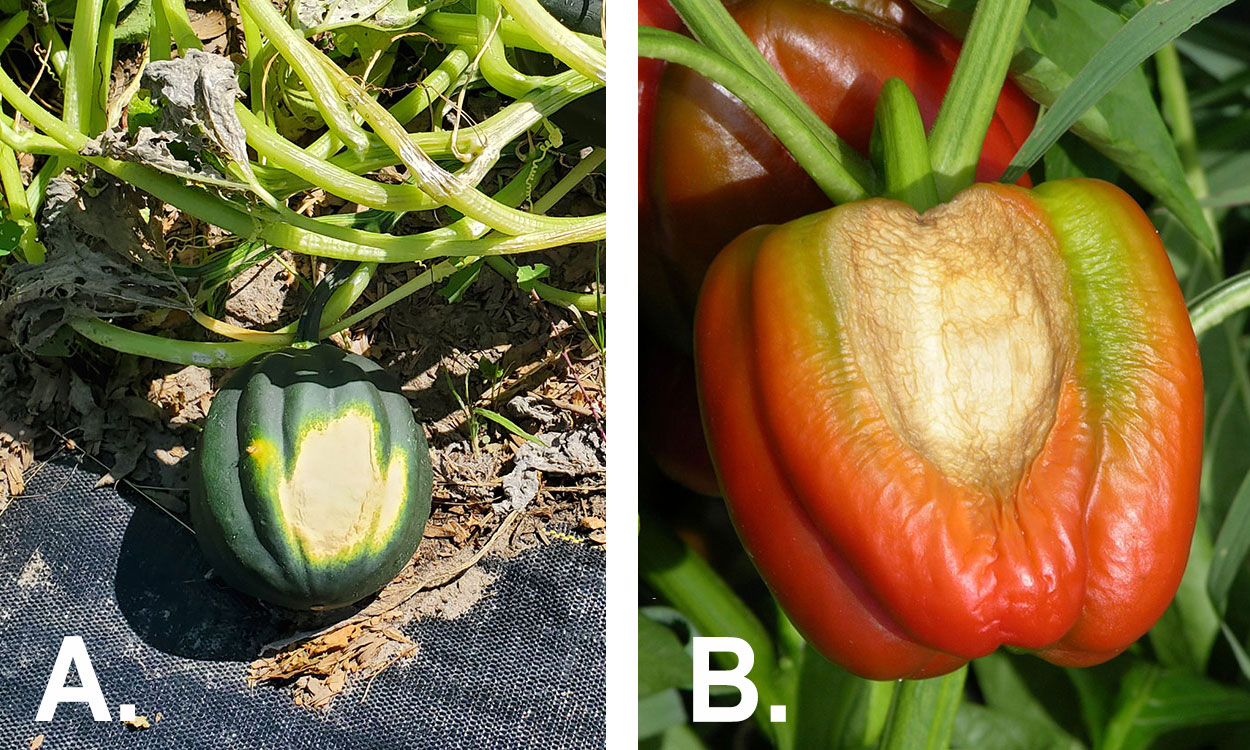
Sunlight can cause sunburn on plants, particularly if the roots cannot supply enough water quickly enough to the plant on hot, windy days. The surface of the fruit can be heated beyond that of the air temperature, leading to sun scorch or bleaching. Cucumbers can be badly sunburned at skin surface temperatures over 100 degrees Fahrenheit; peppers over 105 degrees Fahrenheit. Even temperatures well below these can result in discoloration or bleaching, especially if the leaves have recently died or been removed. For this reason, gardeners should be very cautious in pruning tomatoes to not suddenly expose the fruit.
Malformed Fruit
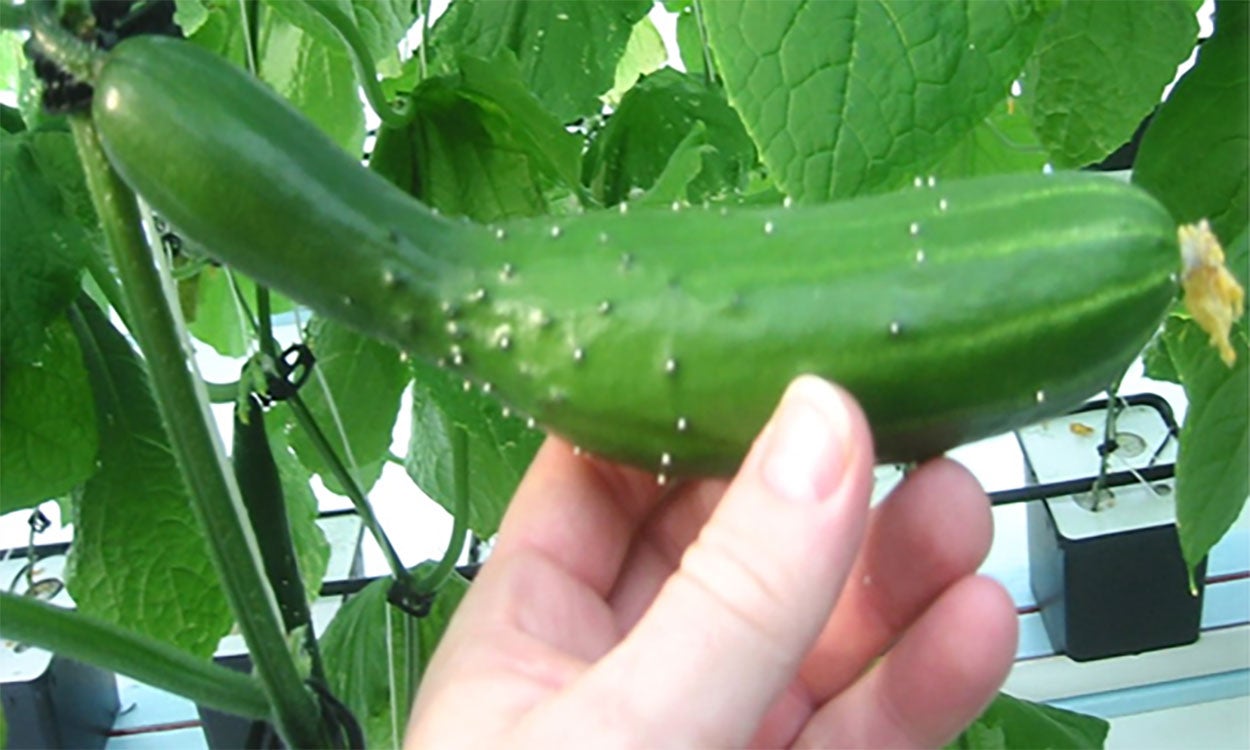
Cucumbers and other cucurbits (squash, melons, pumpkins, etc.) can also be affected by heat. More male flowers than female flowers will be formed under warm temperatures, leading to fewer fruit.
The flowers are generally open for one morning and must be pollinated within that time frame. The warmer the temperature, the more quickly the flower closes, so that it may have only a few hours to be found by a bee (and multiple bee visits are required for full pollination.) Fruit that is formed without complete pollination may be malformed.
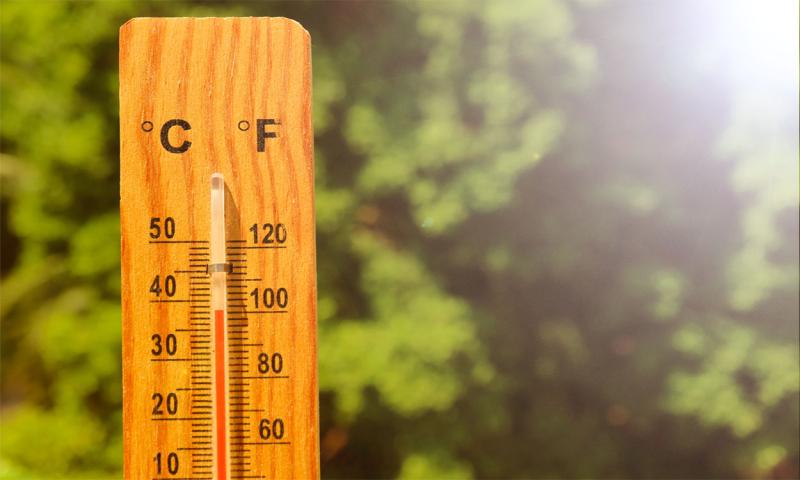
Taste and Development
High temperatures can also affect both photosynthesis and respiration of vegetables, so that more energy is used up and less is stored as sugar. Sugar content of melons tends to be reduced by temperatures over 95 degrees Fahrenheit. Carrots slow growth and are less-sweet at temperatures warmer than 60 degrees Fahrenheit, which is why they are generally tastier when grown in cooler climates, especially those with cooler nights.
The optimal soil temperature for potato tuber formation is 68 degrees Fahrenheit; at 86 degrees Fahrenheit, tuber formation stops. High nighttime temperatures also inhibit tuber formation: temperatures over 72 degrees Fahrenheit slow growth and temperatures over 77 degrees Fahrenheit stop growth altogether.
Management Considerations
What can we do to help protect our gardens during hot spells? Start by selecting heat-tolerant varieties. Water deeply so that roots will not be restricted to the top few inches of soil. Mulch to reduce soil temperatures and water loss. For more information and options, see our articles about Leaf Scorch and Sunscald in the Garden and Protecting Plants From Heat Stress.


